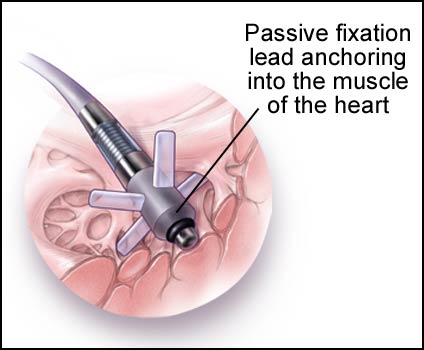
Passive Fixation Lead
A passive fixation lead is a type of pacemaker or defibrillator “wire” that is used to send the electrical signal of the device to the heart. It also monitors the electrical signal and activity of the heart (see fig. 1). The term “passive” indicates only that the lead is attached to the heart muscle without a mechanism that holds the end of the lead against the heart muscle, most commonly a small corkscrew like device on the end of the lead. Passive leads are held against the heart muscle by the pressure exerted by the leads slight stiffness and shape, or by small tynes that grab the lining structures on the inside of the heart (see fig. 2 and 3).
Figure 1: Pacemaker or ICD device with a lead in the right ventricle of the heart.
Figure 2: A passive fixation lead inside the heart.
Figure 3: Close-up view of a passive fixation lead anchored into the heart muscle.
Visit Ohio Heart and Vascular Center for more information.


